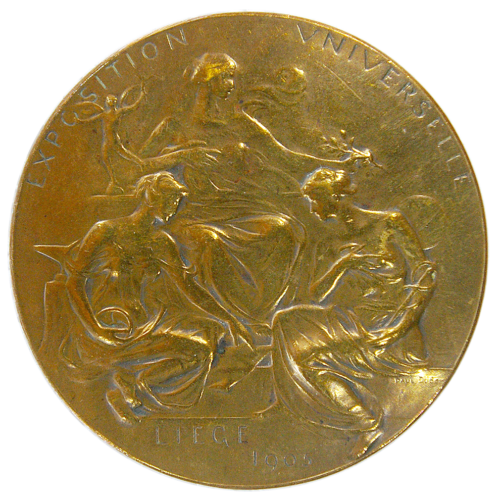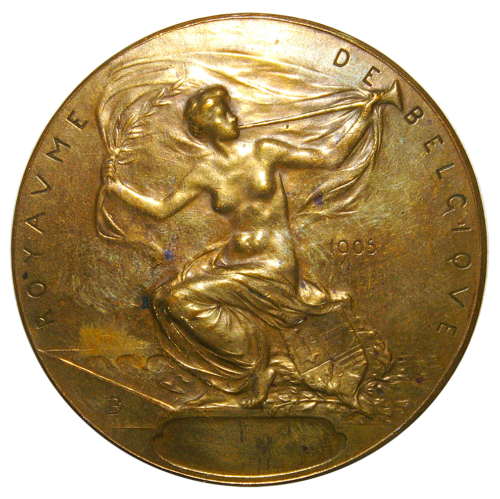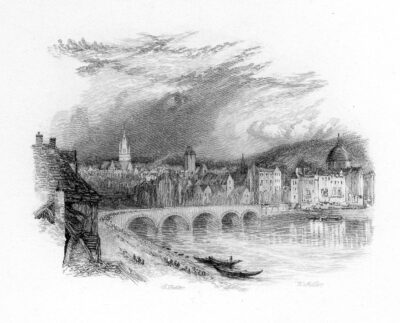M319
Bronze, AU
70 mm (2-3/4”), 140 grams
HISTORY: The Exposition Universelle et Internationale de Liège was held between April and November of 1905, highlighting the Belgian city’s industrial importance. This world’s fair drew exhibits from 29 countries, including the United States of America and Canada. It also celebrated 75 years of Belgian independence from the United Kingdom of the Netherlands’ rule. Paul DuBois (1829–1905), designer of this medal, was a French sculptor and sought-after portrait painter.
OBVERSE: “EXHIBITION INTERNATIONALE” frames the upper bout of this medal and a very complex medallic theme. The Three Graces (Greek Charities) are seated in a triangle. Aglaia (Radiance), to the left, sits in front of an anvil while holding a wheel of industry in her right hand at her side. Thalia (Flowering) in the center holds out an oak branch with her left hand. Next to Thalia’s right elbow is a statuette of Mercury (Greek Hermes), god of commerce, financial gain, luck, and travel. Euphrosyne (Joy), seated to the right, clutching her breast, cradles Mercury’s caduceus on her left arm. Behind her peeks a world globe, while beneath her seated skirt, at about 5 o’clock, is the signature of “PAUL DUBOIS.” The bottom of this medal reads “LIÈGE 1905.”
REVERSE: “ROYAUME DE BELGIQUE” (KINGDOM OF BELGIUM) is incused on either side of Victoria, Roman goddess of victory, clutching a palm frond in her right hand, while sounding a victorious trumpet with her left. In the distance, to the right of her knees, is a vignette of a rising sun over a quay wall and arched bridge crossing the Meuse River (see Detail 1). Leaning against Victoria’s left side is a shield with the Liège coat of arms. Immediately above is the year “1905.”
This medal was never awarded, so the exergue is blank. To the left, at 7 o’clock, are the initials of Paul DuBois (P-D-B on top of each other).
EDGE: Smooth.



